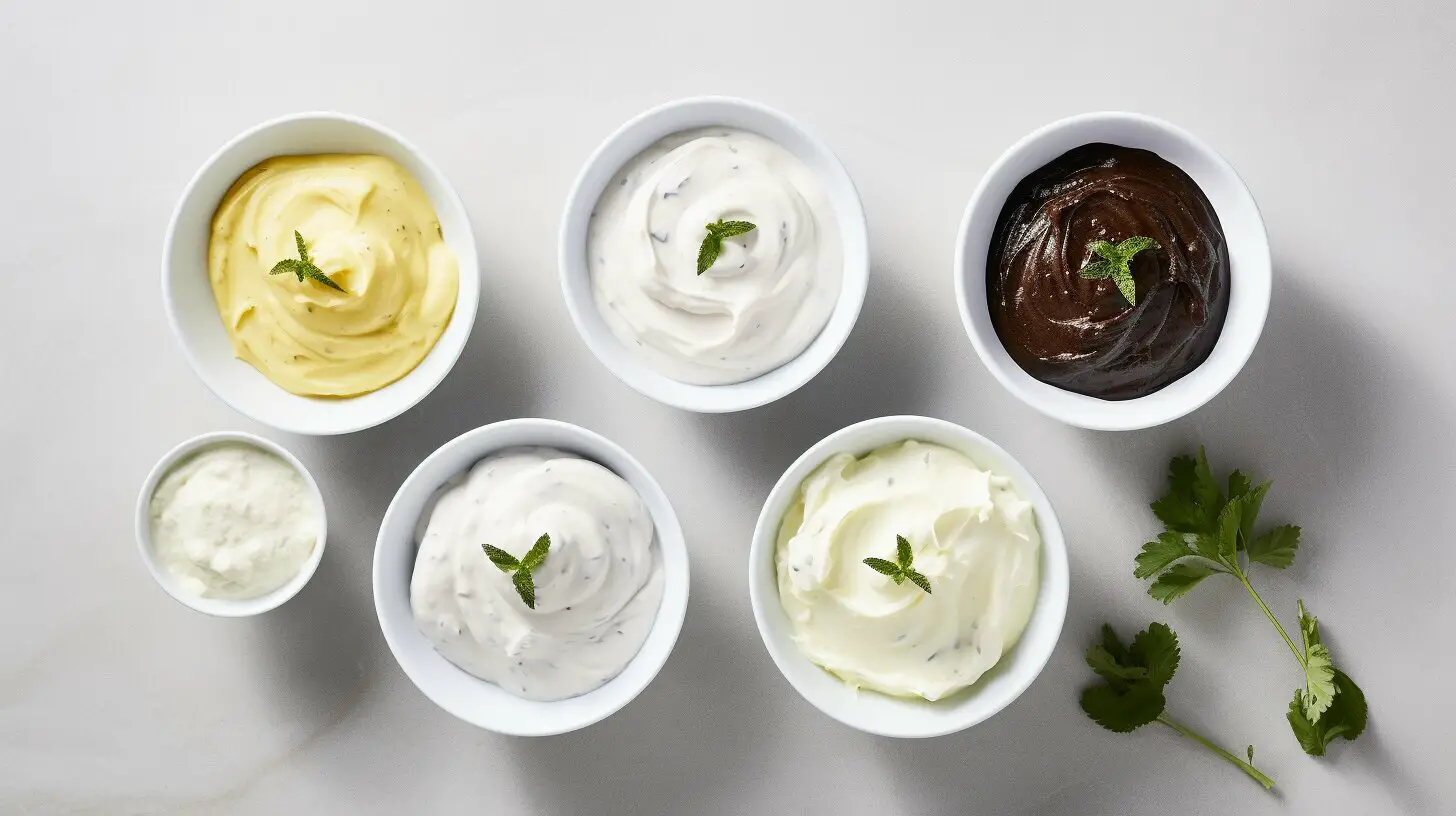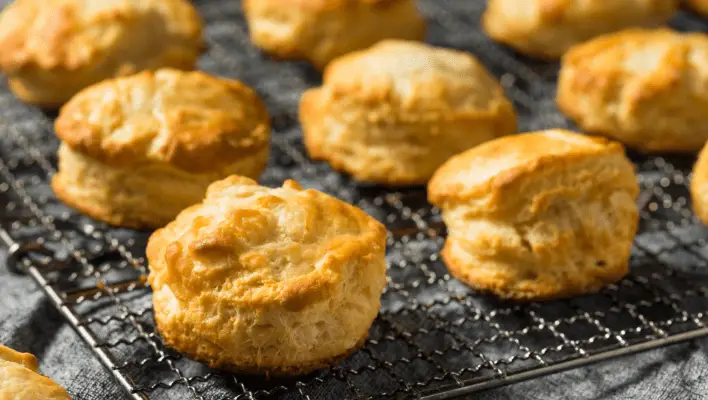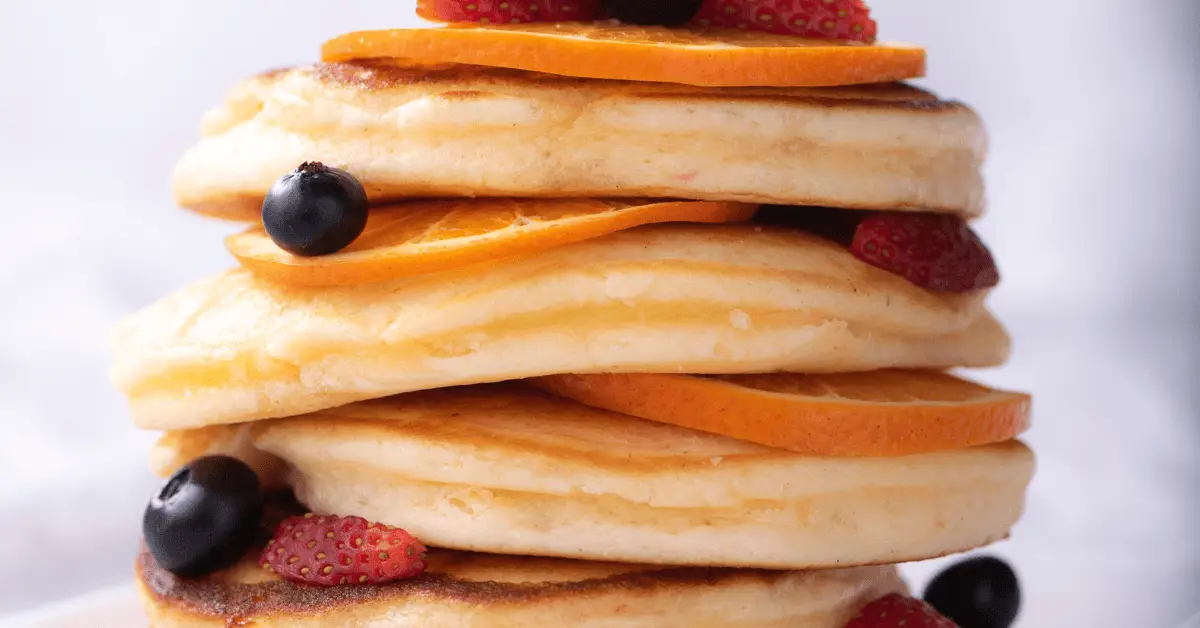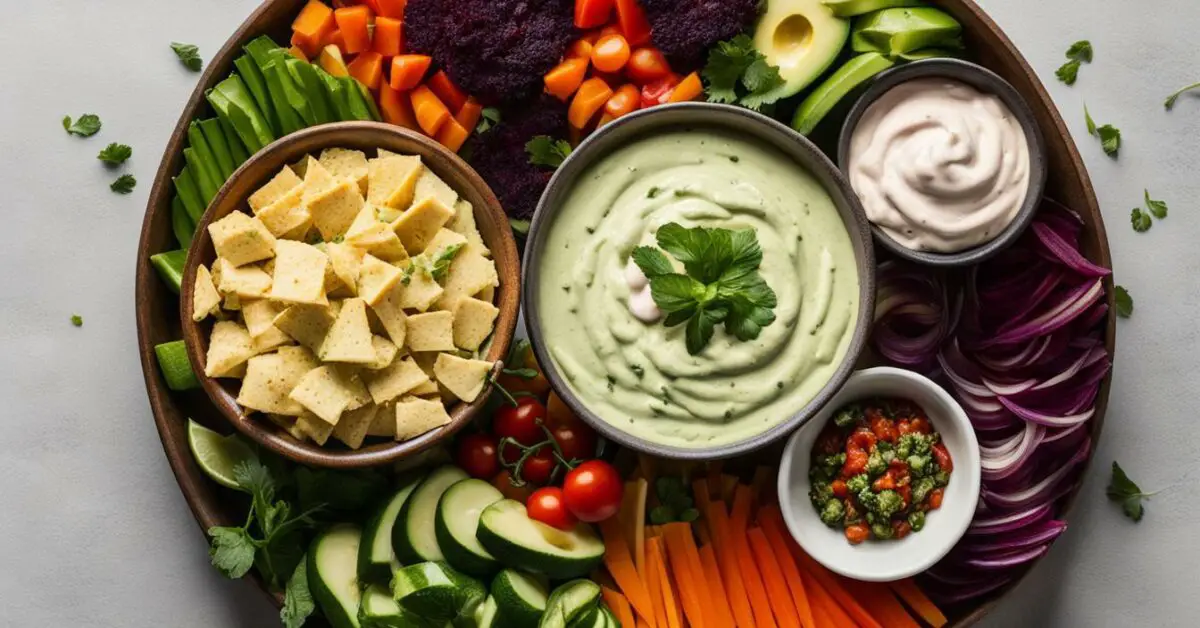
This post may contain affiliate links. Please read my disclosure for more information.
Discover five simple and convenient alternatives to traditional buttermilk that will allow you to create creamy, tangy dips without compromising on flavor or texture. Buttermilk is a common ingredient in many recipes, but if you don’t have it on hand or have dietary restrictions, there are easy substitutes you can use. One option is to mix lemon juice or vinegar with milk and let it sit for 10 minutes to curdle. Another option is to mix milk with plain yogurt or sour cream to achieve a thickened consistency. You can also use kefir or a combination of milk and cream of tartar as substitutes. These alternatives can be used in various recipes, including dips.
Lemon Juice and Milk
If you don’t have buttermilk on hand, a mixture of lemon juice or vinegar combined with milk can be used as a simple and effective substitute in your favorite dip recipes. By adding acidity to milk, you can create a tangy and creamy substitute that will enhance the flavor of your dips.
To make this substitute, start by measuring out 1 tablespoon of lemon juice or vinegar and add it to a measuring cup. Then, pour milk into the cup until it reaches the 1-cup mark. Let the mixture sit for about 10 minutes to allow the acid to curdle the milk. Once it has curdled, give it a gentle stir to ensure it is fully combined.
This lemon juice and milk substitute can be used in any recipe that calls for buttermilk, including dips. It will provide the same tangy taste and creamy texture, allowing you to enjoy your favorite dip recipes even if you don’t have buttermilk on hand.
Yogurt or Sour Cream
For a creamy and tangy dip, you can substitute buttermilk with either yogurt or sour cream, both of which add a rich texture and delightful tanginess. Yogurt is an excellent choice because of its thick consistency, making it an ideal base for dips. Whether you prefer Greek yogurt or regular yogurt, they both work well in replacing buttermilk in dip recipes.
To use yogurt as a substitute for buttermilk, simply measure out the same amount of yogurt as the recipe calls for buttermilk. If the dip requires a thinner consistency, you can add a small amount of milk to achieve the desired texture. Alternatively, sour cream can also be used as a creamy alternative to buttermilk.
Getting the Right Consistency
When using yogurt or sour cream as a substitute for buttermilk in dip recipes, it’s important to consider the consistency. If you prefer a thicker dip, you can use full-fat yogurt or sour cream. However, if you want a lighter dip, opt for low-fat or non-fat yogurt or sour cream. Experiment with different variations to find the perfect consistency for your dip.
Both yogurt and sour cream bring their unique flavors to the table, enhancing the taste of your dip. Yogurt adds a slight tanginess, while sour cream offers a rich and creamy flavor. Depending on your personal preference and the flavor profile you’re aiming for, choose either yogurt or sour cream as your substitute for buttermilk in dip recipes.
Kefir: A Tangy Substitute for Buttermilk in Dips
Kefir, a fermented milk product, is an excellent substitute for buttermilk in dips, providing a pronounced tanginess that complements a wide variety of flavors. This creamy and slightly effervescent beverage is packed with probiotics, making it not only a tasty alternative but also a nutritious one. Whether you’re looking to whip up a creamy ranch dip or a tangy tzatziki, kefir can be your secret ingredient for achieving a rich and satisfying taste.
To incorporate kefir into your dip recipes, simply replace buttermilk with an equal amount of kefir. If you prefer a thicker consistency, you can strain the kefir through a cheesecloth or coffee filter to remove some of the liquid. This will result in a thicker, more luxurious dip. Experiment with different flavors of kefir, such as plain, strawberry, or mango, to add an extra layer of complexity to your dips.
If you’re lactose intolerant or following a dairy-free diet, fear not! There are also non-dairy kefir options available, made from coconut milk or other plant-based ingredients. These alternatives offer the same tanginess and creaminess as traditional kefir, allowing you to enjoy all the benefits without any lactose-related concerns.
Milk and Cream of Tartar
By combining milk with a small amount of cream of tartar, you can easily replicate the creamy and tangy qualities of buttermilk in your dip recipes. This combination is a simple yet effective substitute that can be used in a variety of dip recipes, giving you the same delicious flavors without the need for buttermilk.
To create this substitute, start by pouring one cup of milk into a bowl. Then, add one teaspoon of cream of tartar and stir until well combined. Let the mixture sit for a few minutes to allow the cream of tartar to activate and thicken the milk.
This milk and cream of tartar combination works well in both hot and cold dip recipes. Whether you’re making a creamy ranch dip or a tangy spinach and artichoke dip, this substitute will provide the desired consistency and flavor. So go ahead and get creative with your dip recipes, knowing that you have a reliable and easy substitute for buttermilk at your disposal.
Substitutes in Various Recipes
The substitutes mentioned above can be used not only in dips but also in various other recipes that call for buttermilk, allowing you to maintain the desired taste and consistency. Whether you’re making pancakes, biscuits, or cakes, these alternatives can seamlessly replace buttermilk without compromising the final outcome.
For fluffy pancakes with a hint of tanginess, try using the lemon juice and milk substitute. The curdled mixture adds a unique flavor profile that complements the sweetness of the batter. Similarly, when making biscuits or scones, yogurt or sour cream can provide the necessary moisture and richness, resulting in a tender and delicious baked good.
If you’re looking for a more exotic twist, kefir can bring a slightly tangier and creamier texture to your recipes. Its natural probiotics also offer additional health benefits. Alternatively, the combination of milk and cream of tartar can work wonders in cakes and other baked desserts, ensuring a soft and moist texture.
Experimenting with Flavor Enhancements
While these substitutes can replicate the properties of buttermilk, don’t be afraid to get creative and enhance the flavors even further. Consider adding herbs, such as dill or chives, to your dip recipes for a fresh and aromatic twist. Spices like garlic powder or paprika can add depth and warmth to any savory dip.
To elevate the taste, try incorporating citrus zest, such as lemon or orange, to provide a burst of brightness. These simple additions can take your dip recipes to new heights, allowing you to tailor the flavors according to your taste preferences.
With these buttermilk substitutes and flavor enhancements in your culinary repertoire, you can enjoy creamy and tangy dips without the need for traditional buttermilk. Let your creativity run wild and explore the endless possibilities of homemade dips that suit your dietary needs and taste preferences.
Tips for Successful Substitutions
When substituting buttermilk in dip recipes, keep these helpful tips in mind to ensure your substitutions are successful and your dips turn out delicious.
1. Balance the consistency: Depending on the recipe, you may need to adjust the quantity of substitute ingredients to achieve the desired thickness. If your dip seems too thin, you can add a little more yogurt, sour cream, or kefir. On the other hand, if it’s too thick, simply add a splash of milk or non-dairy milk to thin it out.
2. Consider the flavor: The substitute ingredients will impart their own unique taste to your dips. For a tangy flavor, opt for lemon juice or vinegar mixed with milk. If you prefer a creamy and slightly tart taste, yogurt or sour cream will do the trick. Kefir offers a tangy and probiotic-rich option, while milk and cream of tartar provide a more neutral flavor base.
3. Experiment with ratios: Don’t be afraid to experiment with different ratios of substitute ingredients to discover your preferred flavor and consistency. Start with the recommended measurements and adjust gradually until you achieve the desired results. Keep notes of your experiments so you can replicate your favorite combinations in the future.
4. Enhance with seasonings: While the substitutes will add their own flavor, you can further enhance your dips by adding herbs, spices, or even citrus zest. Experiment with ingredients like garlic, dill, paprika, or lime zest to elevate the taste and create dips that are uniquely yours.
Dairy-Free Alternatives
If you follow a dairy-free diet or have lactose intolerance, fear not! There are excellent dairy-free alternatives that can be used as substitutes for buttermilk in your favorite dip recipes. These alternatives not only provide a similar creamy texture and tangy flavor but also cater to your dietary restrictions.
One option is to use non-dairy milk, such as almond milk, soy milk, or coconut milk, as a substitute for buttermilk. Simply combine a tablespoon of lemon juice or vinegar with a cup of your preferred non-dairy milk and let it sit for about 10 minutes to curdle. This will create a dairy-free version of buttermilk that can be used in your dips.
If you prefer a thicker consistency, you can opt for vegan yogurt as a substitute. Choose a plain, unsweetened variety and use it in the same quantity as the buttermilk called for in your recipe. The tanginess of the yogurt will add a similar flavor profile to your dips without the use of dairy products.
With these dairy-free alternatives, you can still enjoy the creamy and tangy goodness of your favorite dip recipes, even without buttermilk. Experiment with different non-dairy milks and vegan yogurts to find the combination that suits your taste preferences best.
Experimenting with Flavor Enhancements
Don’t be afraid to get creative and experiment with different flavor enhancements when substituting buttermilk in your dip recipes, as it can take your dips to a whole new level. With the right combination of ingredients, you can elevate the taste and add exciting new dimensions to your homemade creations.
One way to enhance the flavor of your dip is by adding herbs. Fresh herbs like dill, parsley, or basil can bring a burst of freshness and aromatic notes to your dip. Simply chop them finely and mix them into your dip for a delightful herby kick. If you prefer a stronger flavor, you can experiment with dried herbs like oregano or thyme, but remember to use them sparingly as they can be quite potent.
Spices are another fantastic option to enhance the flavor of your dips. Consider adding a pinch of smoked paprika for a smoky, slightly spicy twist, or a dash of cayenne pepper to bring some heat. Ground cumin or chili powder can give your dip a hint of earthiness, and garlic powder or onion powder can provide savory undertones. Adjust the amount of spices according to your taste preferences and the flavor profile you want to achieve.
Citrus zest
For a zesty and refreshing twist, try adding citrus zest to your dip. Lemon zest can bring a bright and tangy flavor, while orange or lime zest can add a subtle sweetness. Use a microplane or a fine grater to carefully remove the colorful outer layer of the citrus fruit, being cautious not to include the bitter white pith. Sprinkle the zest over your dip and gently mix it in for a burst of citrusy goodness.
Remember, experimenting with flavor enhancements is all about finding the right balance. Start with a small amount of your chosen ingredient, taste the dip, and adjust as needed. The goal is to complement the flavors of the other ingredients while adding your own unique twist. So, don’t be afraid to have fun in the kitchen and discover new flavor combinations that will make your homemade dips truly memorable.
Conclusion
With these easy and accessible substitutes for buttermilk, you can confidently create creamy and tangy dips that will impress your family and friends, all while using ingredients you already have in your kitchen. Whether you choose to curdle milk with lemon juice or vinegar, thicken it with yogurt or sour cream, or opt for the natural tanginess of kefir, there is a substitute that will suit your taste preferences and dietary needs.
These alternative ingredients can be used in a variety of dip recipes, allowing you to experiment and create unique flavors. Whether you’re making a classic ranch dip or a spicy buffalo dip, the substitutes for buttermilk can enhance the texture and taste of your creations.
When substituting buttermilk in your dips, keep in mind the tips for successful substitutions. Adjust the ingredient quantities as needed to achieve the desired consistency, and taste-test along the way to ensure you’re happy with the outcome. Don’t be afraid to get creative and experiment with additional flavor enhancements, such as adding herbs, spices, or even citrus zest, to take your homemade dips to the next level.
So, the next time you find yourself without buttermilk or looking for a dairy-free option, remember that you have plenty of alternatives at your disposal. With a little bit of knowledge and creativity, you can enjoy creamy and tangy dips that are sure to delight your taste buds.
Enjoy Creamy and Tangy Dips Without Buttermilk!
Say goodbye to the need for buttermilk and say hello to luscious, flavorful dips that showcase your culinary skills with these easy and delicious substitutes. Buttermilk is a common ingredient in many recipes, but if you don’t have it on hand or have dietary restrictions, there are easy substitutes you can use. One option is to mix lemon juice or vinegar with milk and let it sit for 10 minutes to curdle. This creates a tangy and creamy substitute that adds a delightful twist to your dips.
Another alternative is to mix milk with plain yogurt or sour cream to achieve a thickened consistency. The richness of yogurt or sour cream enhances the texture and flavor of your dips, ensuring they are creamy and satisfying. Whether you choose to use yogurt or sour cream, both options provide a tangy and creamy element that will take your dips to the next level.
For a more unique substitute, consider using kefir. Kefir is a tangy fermented milk product that adds a distinctive flavor to your dips. Its natural tanginess elevates the taste and texture of your dips, creating a creamy and tangy experience that will leave your taste buds craving for more.
If you prefer to stick to more traditional substitutes, you can also combine milk with cream of tartar. This combination creates a buttermilk-like consistency and adds a subtle tanginess to your dips. The milk and cream of tartar mixture can be easily incorporated into your recipes, providing a convenient alternative when buttermilk is unavailable.
These substitutes can be used in a variety of dip recipes, allowing you to explore new flavor combinations and unleash your creativity in the kitchen. From classic ranch dips to zesty spinach and artichoke creations, the possibilities are endless. With these easy and delicious substitutes, you can enjoy creamy and tangy dips without the need for buttermilk.


